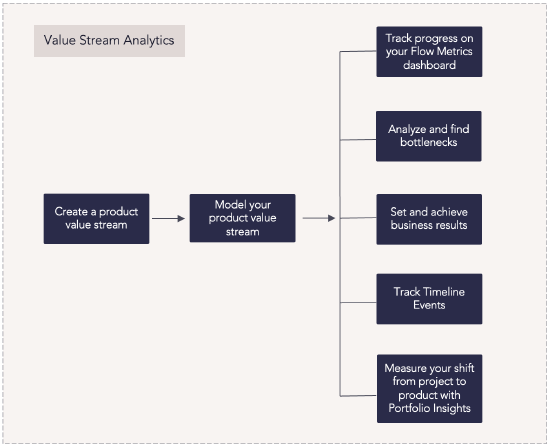Process flows
Value Stream Analytics Process Steps

The Planview Viz value stream analytics capability allows you to measure and manage the overall performance of your product value streams. This enables CIOs, transformation and agility executives, and engineering and product leaders to measure value streams, uncover bottlenecks, and address dependencies in software delivery to become more efficient, predictable, and profitable.
Best Practices
Establish a performance baseline
Track the progress of your value stream to establish a baseline for your performance. Identify areas for improvement such as bottlenecks, wasted time, and areas where work is slowing down. Then, continuously improve by implementing practices that streamline your flow and help you reach your business goals.
Make data-driven decisions
After establishing a performance baseline, use your data as a jumping-off point to test hypotheses, inform operational reviews, drive decision-making, and set business goals. Incorporate Flow Metrics data in internal reporting by quickly and easily exporting snapshots of your data.
Avoid looking at metrics in isolation
Your Flow Metrics should not be viewed individually, but rather in relation to one another for the most accurate representation of your value stream’s performance. For example, by looking at a combination of Flow Load, Flow Time, and Flow Velocity, you can calculate neglected work in progress.
Accurately define flow states
Understand and be able to map work statuses in your workflow to four core states: New, Active, Waiting, and Done. Defining which work statuses map to which flow states informs how your Flow Metrics are calculated. Therefore, be accurate when defining your flow states to avoid misrepresenting your metrics.


